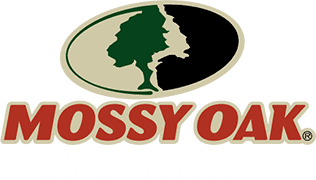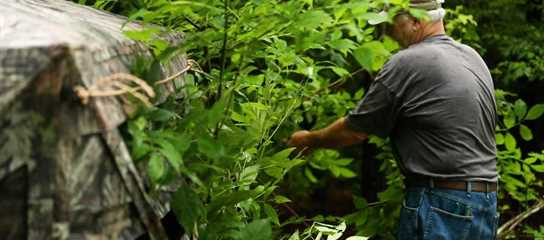Successful hunters know that land management makes all the difference. The right habitat changes bring more animals to your property and keep them there throughout hunting season. Smart land improvements also boost your property value over time. Many top-dollar hunting land for sale listings earned their premium price tag through years of thoughtful planning that created ideal wildlife conditions.
Creating a true hunting paradise takes more than just throwing down some seed. You need a complete approach that builds natural cover, provides reliable water, and works with the existing landscape. This kind of work pays off with healthier animals, more productive hunts, and a property that holds its value. Good land management protects what you have while building something better over time.
Assessing Your Land
Taking time to study your property before making changes pays off tremendously in the long run. Walking every acre during different times of year can reveal natural advantages that already exist. Most properties have hidden gems like secluded meadows or natural funnels that game already use. Documenting these areas saves you from wasting time and money on unnecessary work.
Good land assessment means looking at the big picture of how wildlife moves across your property. Trail cameras tell you what animals live there. Topographic maps reveal natural travel routes that might not be obvious at ground level. Serious hunters track seasonal patterns too, noting where animals feed, drink, and bed down as conditions change.
Enhancing Food Sources
Wildlife stays where food is plentiful. The best hunting properties offer both planted food plots and natural browse plots to keep animals fed year-round. This balanced approach creates reliable feeding areas that attract and hold wildlife on your land even when neighboring properties offer less. Food improvements make the biggest difference during stress periods like late winter when natural options become scarce. Animals remember where they found food during tough times and come back year after year.
Here are a few tips for improving food sources on your land:
- Plant food plots with crops that match your local soil and climate conditions for maximum growth
- Cut select timber stands to allow sunlight that triggers new browse growth at deer height
- Create transitional edges between woods and fields where natural foods thrive
- Switch crop types yearly to prevent soil depletion and disease buildup
- Test soil before planting to fix nutrient problems that limit plant growth
Ensuring Water Availability
Consistent water access ranks just behind food in bringing wildlife to your property. Even in areas with decent rainfall, natural water sources often dry up during late summer and fall hunting seasons. Animals need daily water and will establish regular travel patterns around reliable sources. This predictability makes water features prime ambush locations for hunters who set up properly.
Water management works two ways on hunting land. You can either improve existing natural sources, like springs and creeks, or add new water features in strategic locations where animals already travel. The best spots offer easy access from multiple directions and remain available during all seasons. Clean, fresh water beats stagnant every time when trying to attract quality game.
Creating Bedding Cover
Good bedding areas keep animals on your property day and night instead of just visiting to feed. Deer and other game need secure spots where they feel safe enough to rest without constant stress. Without adequate bedding cover, you might see plenty signs of game but few animals during daylight hours. They simply bed down somewhere else and only visit your property to eat. Dense, undisturbed cover changes this pattern by giving wildlife a true sanctuary.
To create safe areas for wildlife:
- Let thick brush grow naturally in low-pressure zones away from human activity
- Create instant cover by partially cutting trees so they hinge over but stay alive
- Plant tall native grasses around field borders to block wind and provide screening
- Keep human scent and activity minimal near established bedding areas
Managing Habitat
Successful habitat management creates diverse plant communities that support wildlife through all seasons. Native plants typically outperform exotic species for wildlife value while requiring less maintenance once established. The goal involves creating a mix of plant types and growth stages across your property. This diversity supports more wildlife species and provides backup food sources when primary ones fail.
The timing of habitat work significantly impacts the results. Off-season projects cause less disturbance to wildlife patterns and allow new growth to establish before hunting season starts. Most habitat improvements need occasional maintenance to prevent natural succession from turning everything back to forest. Fighting invasive species ranks high on the priority list since these plants often have little wildlife value and crowd out beneficial natives. Land For Sale listings that highlight diverse, well-managed habitat types typically attract more buyer interest.
Optimizing Access and Stand Placement
Smart hunters plan how they move through their hunting property just as carefully as they plan habitat improvements. Poor access routes spook game before you ever see it, wasting all your habitat work. The best properties have invisible entry paths that let hunters reach prime spots without alerting wildlife. Effective access planning respects how animals use the land and avoids disrupting their natural patterns.
Wind direction drives successful hunting more than almost any other factor. Animals detect human scent from incredible distances, making proper stand placement critical to hunting success. The right setup lets you hunt different wind conditions throughout the season without alerting game to your presence.
To limit game awareness:
- Create entry trails that follow terrain features like ridges or creek bottoms that hide movement
- Position stands with prevailing seasonal wind patterns in mind for scent control
- Switch between multiple stand locations to prevent animals from patterning your movements
- Maintain extra stand sites for flexibility when conditions change unexpectedly
Year-Round Maintenance
True hunting land management never really stops. Each season brings different tasks that build toward better habitat and hunting over time. Small improvements made consistently yield much better results than occasional, massive projects that disturb wildlife patterns. The best land managers develop a calendar that spreads work throughout the year to minimize disruption during prime hunting months.
Regular monitoring tells you what works on your specific property. Trail cameras, track counts, and harvest data build a picture of wildlife populations and movements that guides future decisions. Even failed projects provide valuable information about what not to try again. Properties with documented management history showing wildlife population growth often command premium prices. Recreational Land for Sale with proven wildlife management often sells faster than comparable unmanaged tracts.


